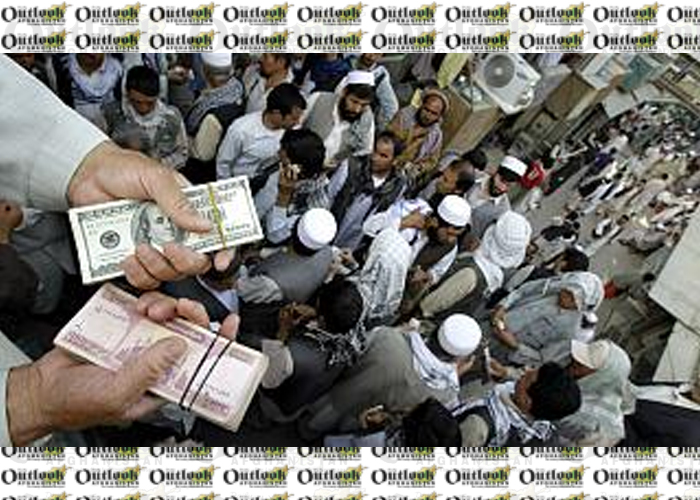As everyone is aware after the rapid advance of the Taliban, the siege and area under the control of the government are hurriedly declining. In addition to taking the control of hundreds of districts, it is said that the Taliban have taken the control of several important ports and customs, including the port of Islam Qala and Torghundi in the west, Sher Khan Bundar in the north, and Dand-e Patan custom in the east of the country . According to local media news, the Taliban have also seized control of four friendship bridges between Tajikistan and Afghanistan in Ishkashim, Sheghnan, Mahmi, Nasi, and Khawan districts. After the domination of the Taliban on these ports and bridges, the prices have sharply increased in the free market of the country as the imports and exports ports of Afghanistan were carried out through these ports, customs, and bridges. If the domination of Taliban continues on the customs, bridges, and highways, the major cities will seriously be faced with more serious economic challenges.
In order to have a deeper review the importance of these ports, we need to discuss each one separately. As pointed out, the first and second important ports which have been captured by the Taliban are Islam Qala and Torghundi ports in the west of the country and they are considered as the main artery of import and export in the country. These ports supply food, oil, gas, and raw materials to western provinces and other parts of the country from Iran and Turkmenistan. The capture and possession of these ports means the siege of western provinces including Hetrat. If the Taliban continue the control of these ports, it is likely that food and other necessities will further rise in the coming days, making life more difficult and unbearable for residents of Herat and other parts of Afghanistan. It is said that only Iran’s exports to Afghanistan are about “four billion dollars” a year, and Afghanistan’s exports to Iran are between 40 and 50 million dollars. This amount of exports and imports is possible in the presence of a regular customs system and technical team on both sides of the border. It is not technically the job of the Taliban to maintain this system and manage it properly. Sher Khan Bandar in the border between Afghanistan and Tajikistan is the third most important and lucrative port in the country fallen into the domination of the Taliban in recent weeks. This port supplies Kunduz and several other provinces in the north of the country. Also, most of the raw materials of the center are supplied through this port, but now it is said that, in addition to this port, 910 km of the Afghanistan-Tajikistan border is under the control of the Taliban. There was also trade in parts of the border that Tajikistan closed due to deteriorating security. In general, in the presence of the Taliban, imports and exports will be stopped, and this will harm the trade and economy of the people and the government.
The fourth important economic resource fallen into the control of Taliban is Dand-e Patan custom in the southeast part of the country. According to the Afghanistan Chamber of Commerce, the Taliban earn millions of Afghanis a day by taking control of Dand Patan custom in Pakia province. In addition, the fall of this custom affected at least 30% of the import and export process and so it sharply affected prices in the free market of the country. For example, a few days ago, the price of one kg of chicken was less than 200Af, but now it is more than 300Af. The price of one kg gas was around 50 but now it is around 70 Afs. The price of 16 kg cooking oil was around 1600Af but now it becomes more than 2100Af. The price of 30 eggs was 190 Afs but now it is more than 300 Afs in the Kabul market.
In addition to the fall of districts, ports, and customs, the fall of Afghan currency against the USD has also economically pressurized people declining their power of purchase. In recent days, the Afghan currency has suddenly fallen from 77/8 to around 82. According to experts, the growing war, violence, and falls of districts, ports, and customs have created distrust of Afghan currency in the country. The people do not trust to use or save Afghani when they see the worsening situation in the country. There are many individuals and businesses who do not use Afghani in daily transactions because of its steady decline. Hence, everyone is concerned about the fast depreciating value of the Afghani against the dollar in Afghanistan. The local experts believe further decline the Afghani may more extremely harm people’s lives and small businesses as they are the ones who use Afghan currency and pay the rising price for goods on the local markets. Therefore, the government, especially the central bank must change the situation for the benefit of ordinary people.
In general, the fall Afghani currency, the fall of ports and customs have several economic implications in the country. On one hand, it economically weakens and pressurizes the government and people of Afghanistan lowering their power of purchase. On the other hand, it lightens the burden of the Taliban supporters creating millions of money for Taliban to expand their infiltration and influence across the country. Therefore, the so-called strategic retreat from these strategic places and ports will paralyze both people and government from standing against the aggressive advances of the Taliban. In fact, the survival of the central government depends on these ports and customs being open and under government control. Ignoring the important of these economic ports will put the people in a bad situation.
Home » Opinion » The Economic Implications of the Taliban Advances in Afghanistan
The Economic Implications of the Taliban Advances in Afghanistan
| Mohammad Zahir Akbari

